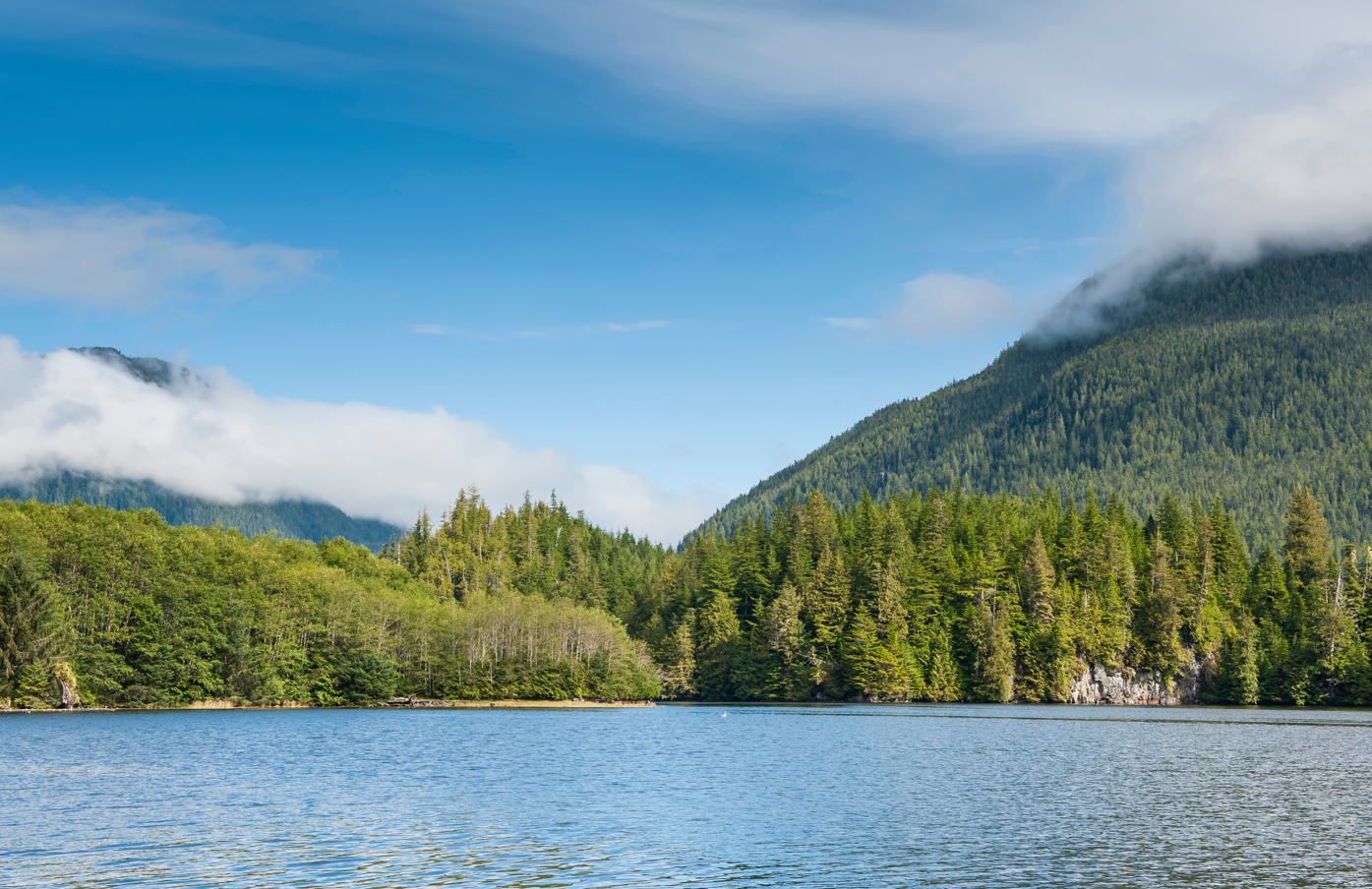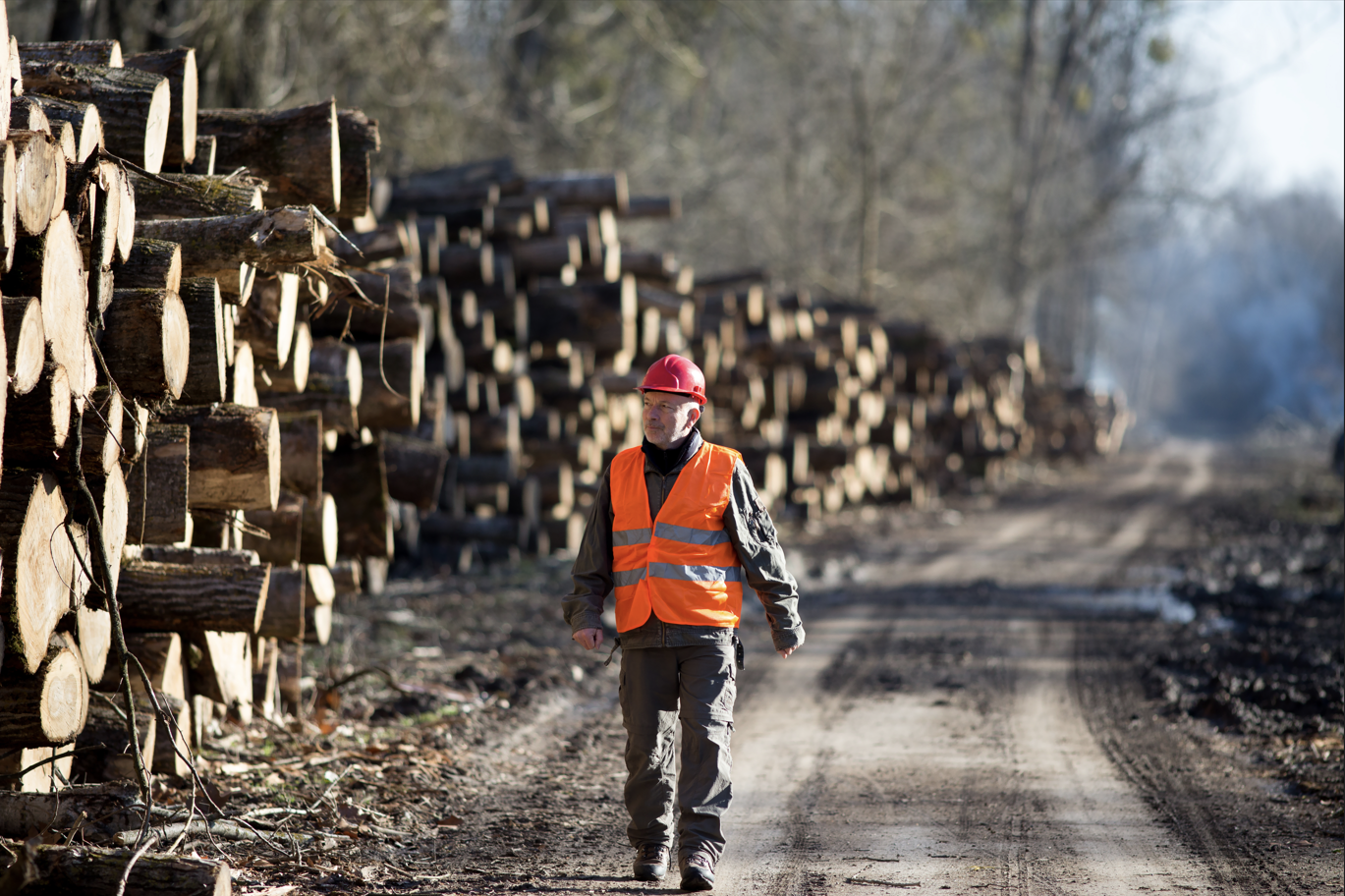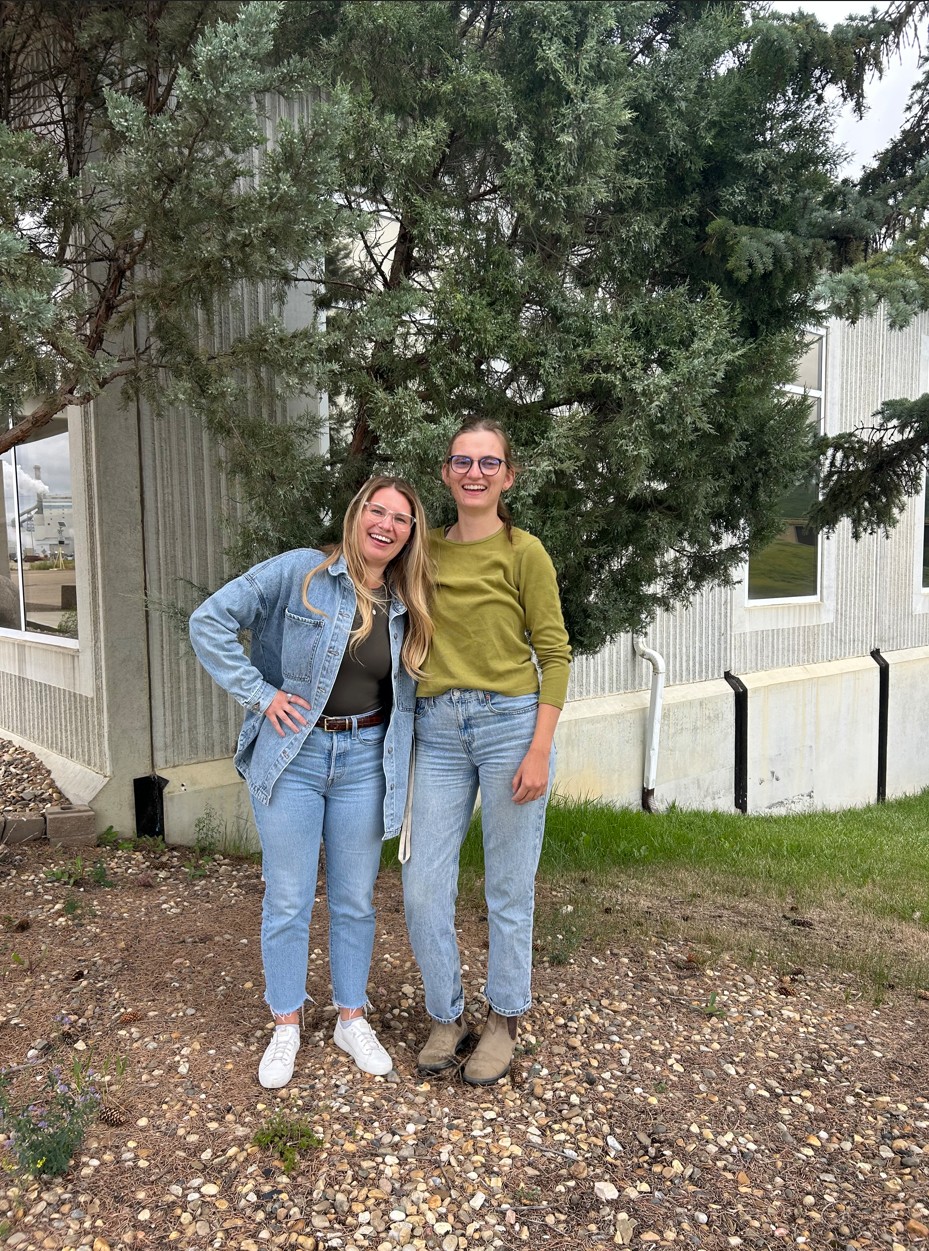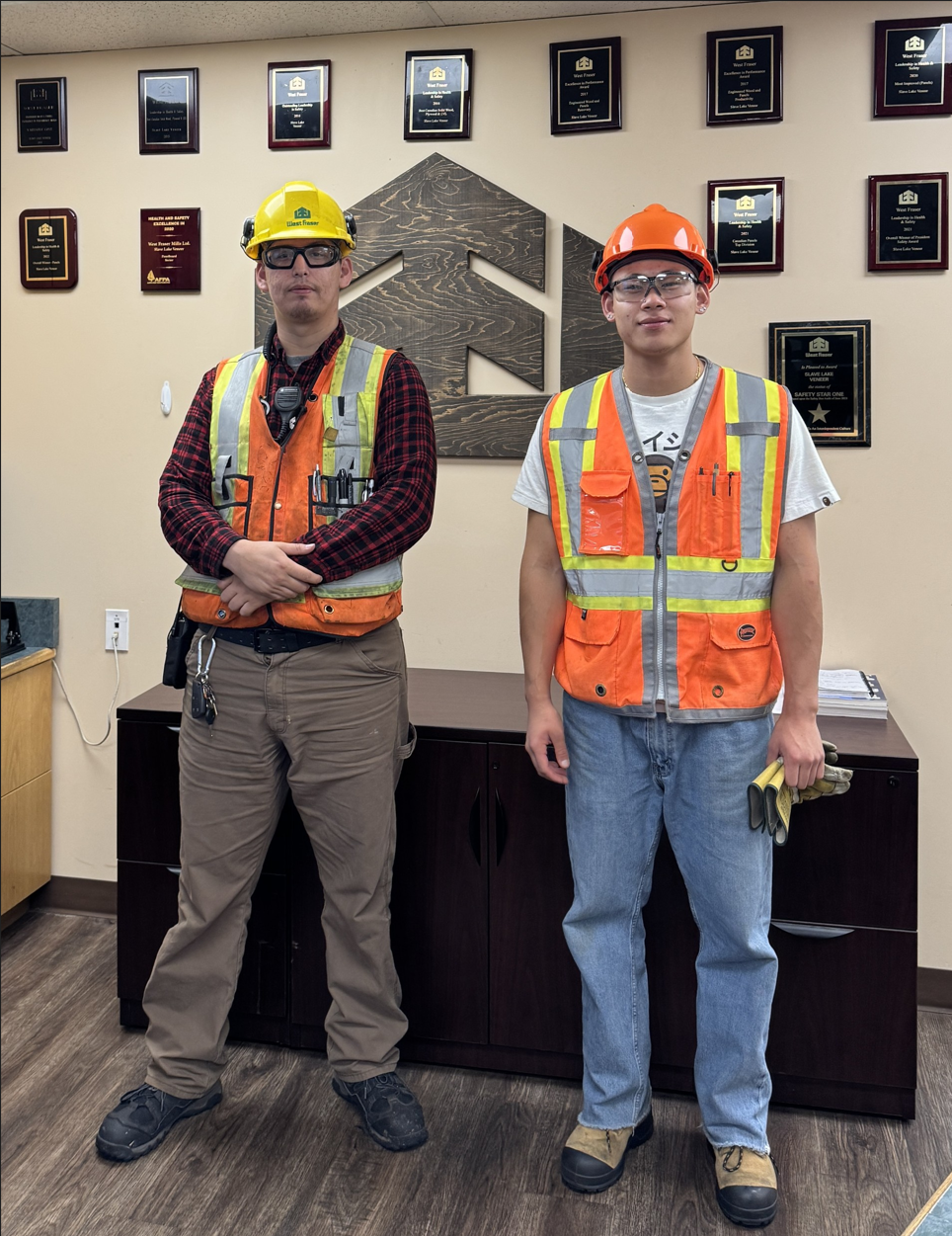Hello Readers,
Firstly, I would like to express how grateful I am to be selected as a Green Dream Intern. Huge thank you to FPAC for providing me with an opportunity to share my experiences over the summer. Since over half the summer has already flown by, I would like to tell you about my first few weeks at Tolko High Prairie, what my job consists of, and what I like most about it.
Last fall while attending my second year of Forestry at the University of Alberta, I was intent on securing a summer student position on the operations side of forestry. I was absolutely thrilled when after a day of bowhunting, I heard a voicemail on my phone saying I got a job as a Woodlands Student at Tolko’s High Prairie OSB mill. The next six months was filled with nothing but anticipation to start working away in the bush and gain industry experience.
For the first few weeks at Tolko, my three coworkers and I spent our days meeting everyone in the Woodlands division, organizing equipment and going through various field and online training. The bear safety course was run by a very knowledgeable instructor, who answered our questions thoroughly and set straight exactly how to act during encounters with bears and other wildlife. For our ATV training we spent the day working through drills, obstacles, loading and unloading, then drove down some trails. In case of a fire, we learned how to run a Mark 3 pump, which I found to be the most informative training since I had never run one before. The defensive driving training was my favourite by a long shot. After a day of classroom training, we spent another day in a gravel pit performing emergency stops, hairpin turns, slaloms, and trailering. All the field training we received was informative, applicable and nothing but a good time.

We also went through some training that isn’t specific to our job this summer but gave us a glimpse into other areas of forestry. Since we were going to perform operational duties, silviculture wasn’t something we would do at all, but our supervisor thought some exposure to it would be beneficial. We then took a two-day course to become qualified surveyors. Regeneration standards, reconnaissance surveys, intensive surveys, and reporting were some of the topics covered in the classroom. For the field portion we made our way out to a block and conducted an intensive survey that would be sent to the government. We also spent a day checking planters, where we sampled some plots to made sure seedlings were planted to proper densities and quality. Getting a small taste of silviculture was time well spent and broadened our knowledge of the industry, beyond the daily work we were to do this summer.
There are a few different responsibilities in our summer positions, but the main one is block layout. A typical day of layout starts with a drive to a specific compartment, then a quad ride as close to the block as we can get. Once in the block we use maps to navigate the entire area looking for key features. The purpose of layout is to identify the key features within a block that would affect harvesting operations and the environment or that have importance to various stakeholder groups. In a day of layout, we need to find and GPS wildlife points such as bird nests, bear dens, and mineral licks so they can be given a specific buffer. Watercourses and wetlands are the features we GPS and ribbon the most in a day. These also need buffers determined by their classification and they require different types of crossings, so they are not damaged by machinery. We also look for birch stands to be kept as retention, as the Chaga mushrooms found in these stands are used by local First Nations groups for medicinal purposes. At the end of the day, layout is essentially exploring the bush, which is something I would be doing anyway if it wasn’t my job. Now I get the added convenience of scouting for hunting spots, finding sheds and berry patches, or other interesting things, all while I work away. I can say with confidence that I absolutely love layout, and all the rose thorns in my knees and itchy mosquito bites are worth it just to be in the bush, all day every day


Although layout is the meat and potatoes of the job, we also have a few other tasks. One of these is to inspect crossings such as culverts and bridges. Single culverts are the most common to inspect. For these we must check many things to ensure the culvert is in good condition and working as it should. Among other things we check that the culvert is structurally sound and level, that there are no blockages and water can flow freely, that there is no erosion around the culvert, and that there are delineators in place to indicate that the culvert exists. If the culvert is not working as it should, the quality of a watercourse, and the accessibility or safety of the road can be affected. Checking crossings is a lot more relaxed compared to layout, but the task still makes for a good adventure.
One of my favourite parts about my job is coming across interesting things, however simple they might be. A good view is always pleasurable to find, the best one we found so far was a high ground overlooking the bend of a beautiful river. Was it ever a surprise when overlooking such a nice view, I spotted the very first strawberries of the season. Sheds are probably my favourite to find. So far, I’ve found three from whitetails, and I’m crossing my fingers that I find a moose or elk shed by the end of the season. I have also found many animals, trail signs, trappers cabins, and giant trees. These are all small things and may not seem that interesting to everyone, but they remind me how lucky I am to have the job I do.



Adventuring through the bush and finding cool things is great, but the most enjoyable part of my job is the people I get to work around. I couldn’t have asked for a better group of students to work with. Each of us have different skills and that is part of what make us a good team. My days in the bush are only as good as they are because of my work mates. It was refreshing to meet everyone in the High Prairie and Slave Lake Woodlands division since its very clear that they are not only knowledgeable but also passionate about their jobs, and they genuinely enjoy what they do. I must say that I am fortunate to work with the supervisors and students I do, because they make the summer more enjoyable than it would otherwise be.
I hope this summary of my job as a Woodlands Student at Tolko High Prairie gave you a good idea of what it’s like working in forestry for the summer. Thanks for reading!
Bailey Brokenshire










.jpeg)

